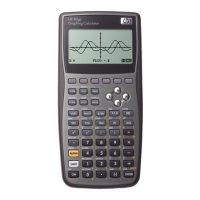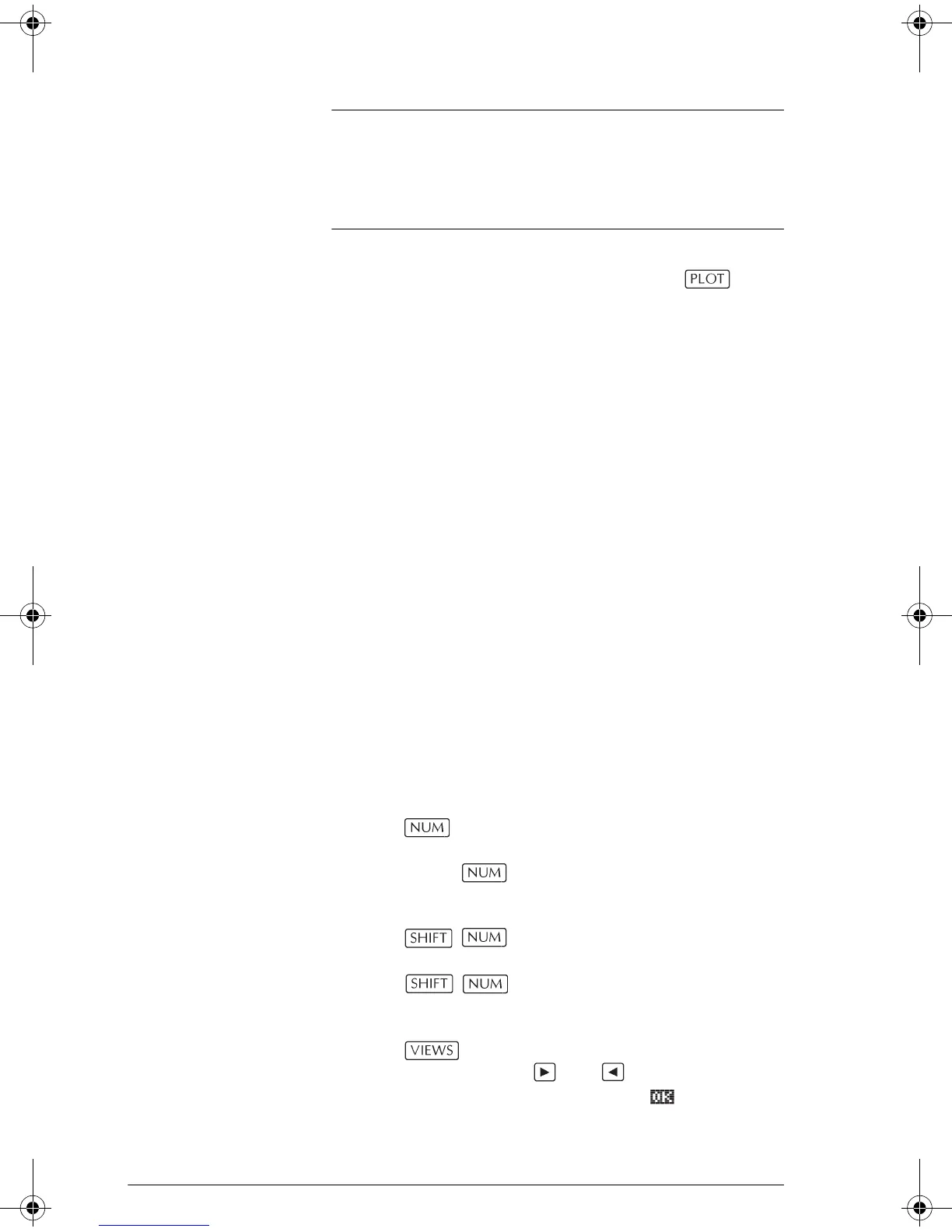15-20 Equation Writer
NOTE
This operation supposes that the current variable is also
the variable of the function or curve you want to graph.
When the expression is copied, it is evaluated, and the
current variable (contained in VX) is changed to X, T, or
θ, depending on the type of plot you chose.
If the function depends on a parameter, it is preferable to
give the parameter a value before pressing . If,
however, you want the parameterized expression to be
copied with its parameter, then the name of the
parameter must consist of a single letter other than X, T,
or θ, so that there is no confusion. If the highlighted
expression has real values, the Function, Aplet or Polar
Aplet can be chosen, and the graph will be of Function or
Polar type. If the highlighted expression has complex
values, the Parametric Aplet must be chosen, and the
graph will be of Parametric type.
To summarize. If you choose:
• the Function Aplet, the highlighted expression is
copied into the chosen function Fi, and the current
variable is changed to X.
• the Parametric Aplet, the real part and the imaginary
part of the highlighted expression are copied into the
chosen functions Xi,Yi, and the current variable is
changed to T.
• the Polar Aplet, the highlighted expression is copied
into the chosen function Ri and the current variable is
changed to θ.
NUM key Pressing in the Equation Writer causes the
highlighted expression to be replaced by a numeric
approximation. puts the calculator into
approximate mode.
SHIFT NUM key Pressing in the Equation Writer causes the
highlighted expression to be replaced by a rational
number. puts the calculator into exact
mode.
VIEWS key Pressing in the Equation Writer enables you to
move the cursor with the and arrow keys to see
the entire highlighted expression. Press to return in
the Equation Writer.
hp40g+.book Page 20 Friday, December 9, 2005 12:27 AM

